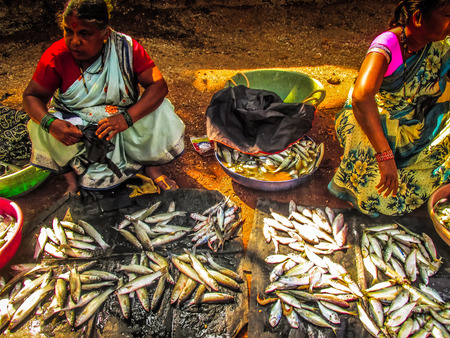The Spirit of Fishing: Tribal Competitions in Madhya Pradesh
In the vibrant heartland of Central India, the tribal communities of Madhya Pradesh have long celebrated their love for fishing through spirited competitions and age-old traditions. These traditional fishing games are not just about catching fish—they are a true test of skill, agility, and tactical planning, deeply embedded in the cultural fabric of the region. Each year, villages come alive as families and friends gather by local rivers and lakes, ready to showcase their prowess with handcrafted bamboo rods and ingenious netting techniques.
The adrenaline surges as teams strategise, working together to outsmart both the swift-moving fish and rival groups. For many Adivasi (indigenous) participants, this is more than a contest; it is an expression of pride and unity that strengthens community bonds. Elders share ancestral fishing secrets while youngsters learn the importance of patience, sharp observation, and precise timing—all critical skills that translate into daily life. These competitions are not just sporting events but communal celebrations where music, laughter, and traditional dance transform the banks into festive arenas.
As evening descends and the catch is tallied, winning teams bask in respect, their names remembered until next seasons challenge. Whether you’re a seasoned angler or a curious onlooker, experiencing a tribal fishing game in Madhya Pradesh offers a rare glimpse into India’s indigenous sporting spirit—where every cast is fuelled by heritage, honour, and an unbreakable sense of belonging.
2. Tactics and Techniques: Indigenous Fishing Methods
The tribal communities of Madhya Pradesh are renowned for their mastery in traditional fishing, blending raw skill with ingenious local gear to outwit the elusive fish of the region’s rivers and ponds. Unlike modern angling, here it’s all about resourcefulness, keen observation, and deep-rooted knowledge passed down through generations.
Local Gear: Bamboo Traps, Nets & More
The heart of indigenous fishing lies in the equipment, often crafted from what nature offers. Tribals fashion bamboo traps—locally known as ‘Donga’ or ‘Phandi’—which are expertly woven to lure and entrap fish without external bait. Handwoven cotton or jute nets, sometimes dyed with natural pigments for camouflage, are skillfully cast by seasoned fishers. For shallow streams or muddy ponds, barehanded catches are a true test of reflexes and patience, showcasing the competitive spirit in every move.
Improvisation & Technique Table
| Method | Gear Used | Key Skills |
|---|---|---|
| Bamboo Trap Fishing | Donga/Phandi (Bamboo trap) | Trap placement, timing, stealth |
| Net Casting | Handwoven net (Jaal) | Throwing technique, water reading |
| Barehanded Catching | No gear—just hands! | Agility, patience, quick reflexes |
Competitive Edge in the Tribal Belt
The tribal fishers treat every outing as a tactical contest against both nature and fellow villagers. The choice of location—hidden coves, reed beds, or fast-flowing bends—is as strategic as any sporting playbook. Locals improvise by altering net shapes or adjusting bamboo trap designs based on seasonal fish movement, showcasing a relentless drive to stay ahead. Here in Madhya Pradesh’s tribal belt, fishing is more than livelihood—it’s a thrilling display of tactical thinking and mastery over one’s environment.

3. Riverside Rivalry: The Cultural Significance of Fishing Contests
In the heartland of Madhya Pradesh, riverside fishing contests are much more than mere games—they are powerful displays of skill, tradition, and communal pride among tribal communities. These tournaments, often hosted along the banks of the Narmada or Betwa rivers, transform tranquil waters into lively battlegrounds where the best anglers from rival villages showcase their prowess.
Ceremonial Importance and Ritual Beginnings
Every tournament kicks off with vibrant rituals unique to each tribe—offerings of flowers and grains to river spirits, rhythmic drumbeats, and blessings from village elders. This ceremonial opening is a nod to ancestral traditions, believed to bring luck and ensure fair competition. Participation is not just about catching fish; it’s a way to honour one’s heritage and ancestors, blending reverence with rivalry.
Festive Atmosphere: A Carnival by the Water
The air buzzes with excitement as families gather along the riverbanks. Colourful tents go up, local vendors sell spicy chaat and sweet jalebis, while folk musicians add rhythm to the day. Children cheer on their relatives; elders exchange stories of past glories. The contest is a community celebration—a festival where everyone has a stake in the outcome and camaraderie thrives alongside competition.
Honour at Stake: Competing for Glory and Respect
For seasoned anglers, every cast is a matter of pride. Winning a tournament brings not only prizes—like handcrafted trophies or bountiful catches—but also immense social respect. Champions become local legends; their techniques are studied and imitated by aspiring youngsters. Victory brings glory to one’s family and village, strengthening bonds within the community while fuelling healthy inter-village rivalries that persist year after year.
These fishing contests are proof that in Madhya Pradesh, angling is more than a pastime—it’s an arena for honour, festivity, and living tradition that knits tribal society together.
4. From Nets to Plates: Local Fish Cuisine and Traditions
In the heart of Madhya Pradesh, the journey of a freshly caught fish is a celebration that connects the river to the tribal kitchen. Once the catch is hauled in using traditional nets like ‘jal’ or bamboo traps, the real feast begins. Fish are cleaned by the riverside, often accompanied by rhythmic tribal songs and laughter—a true reflection of local camaraderie.
Authentic Tribal Recipes
Each tribe in Madhya Pradesh has its signature way of preparing fish. Whether it’s slow-cooked over a wood fire or marinated with indigenous spices for a tangy flavour explosion, the methods vary across villages. Among the Baiga and Gond communities, fish is often cooked with forest herbs and wild chillies, delivering robust flavours unique to the region.
Traditional Cooking Techniques
| Tribe | Main Technique | Signature Ingredients |
|---|---|---|
| Baiga | Wood-fire roasting | Wild garlic, tamarind leaves |
| Gond | Clay-pot simmering | Red chilli, mustard oil, coriander |
| Bhil | Bamboo spit grilling | Lemon grass, turmeric root |
Seasonal Feasts & Community Gatherings
The monsoon and post-monsoon periods trigger grand community feasts called ‘machhli bhoj’, where families come together to enjoy their collective catch. These events are marked by vibrant music and folk dances like ‘Saila’ and ‘Karma’, reinforcing bonds within the tribe while honouring the bounty of nature.
Essential Pairings: Fish with Bhaat or Roti
No fish meal in Madhya Pradesh is complete without its classic accompaniments. Steamed ‘bhaat’ (rice) from local paddy fields or hand-rolled ‘roti’ made from millets like jowar or bajra form the backbone of every plate. The combination not only enhances taste but also provides sustained energy—essential for those who spend long hours on fishing expeditions.
Typical Fish Meal Plate in a Tribal Household:
| Dish Component | Description |
|---|---|
| Main Course | Freshwater fish curry or roast (based on season) |
| Accompaniment 1 | Bhaat (steamed rice) or millet roti (jowar/bajra) |
| Side Dish | Sautéed wild greens or bamboo shoot pickle (‘achar’) |
| Dipping Sauce | Tangy chutney with chillies and garlic (‘thecha’) |
| Beverage | Palm toddy or herbal decoction (‘kadha’) |
This fusion of tradition, technique, and togetherness transforms every fishing day into a culinary festival in rural Madhya Pradesh, blending ancient skills with mouthwatering results that reflect India’s rich tribal heritage.
5. Community Unity: Sharing the Catch and Stories
Feasting Together: More Than Just a Meal
In Madhya Pradesh, the spirit of tribal fishing extends far beyond the thrill of the catch. Once the day’s adventure concludes, villagers gather under banyan trees or at the edge of shimmering lakes to celebrate their success. The fresh fish is not merely food—it becomes the heart of a community feast, where everyone from elders to children participates in preparing, cooking, and enjoying traditional dishes like Mahua Fish Curry or spicy Rohu Fry. This communal dining reinforces kinship bonds and reflects the deeply rooted Indian value of “Atithi Devo Bhava”—the guest is God.
Legendary Catches: Stories That Bind Generations
No meal is complete without stories echoing across generations. Elders recount tales of legendary catches—like that massive Catla caught during monsoon or how a nimble youth once outwitted an elusive river eel using only bamboo traps. These stories aren’t just entertainment; they are oral history, teaching youngsters about resilience, tactics, and respect for nature’s cycles. In tribal Madhya Pradesh, such narratives are as treasured as any trophy fish.
The Rituals of Sharing: Upholding Rural Ethos
The act of sharing fish is sacred. It’s customary for successful anglers to distribute portions among neighbours, ensuring that even families who didn’t join the hunt still partake in the bounty. This practice embodies “Vasudhaiva Kutumbakam”—the world is one family—a core Indian belief system. Whether it’s splitting dried fish for storage or inviting all to taste a freshly grilled catch, these rituals cement social harmony and ensure no one goes hungry. Here, unity isn’t just a word; it’s a way of living sustained by every shared meal and story.
6. Evolving Traditions: Modern Challenges and Tribal Innovation
The traditional fishing games and culinary rituals among the tribal communities of Madhya Pradesh have always been closely tied to their natural environment. However, in recent years, these age-old practices face significant challenges due to environmental changes such as erratic monsoons, depletion of riverine resources, and pollution. Additionally, the encroachment of modern lifestyles and influences—from urban markets to government regulations—has forced many tribal fisherfolk to rethink their approach to both fishing competitions and food preparation.
Adapting Game Tactics: From Bamboo Spears to Eco-Friendly Nets
In response to dwindling fish populations and stricter fishing laws, tribal communities have started innovating with their gear and techniques. While earlier generations relied solely on hand-crafted bamboo spears or woven traps during their spirited fishing contests, younger participants are now experimenting with biodegradable nets and selective harvesting methods that protect juvenile fish stocks. These adaptive tactics not only keep the competitive spirit alive but also ensure sustainability—a value deeply respected in Adivasi culture.
Culinary Evolution: Blending Tradition with Modern Flavours
Just as their fishing tools have evolved, so too have the culinary traditions. Tribal cooks are creatively integrating locally available millet varieties like kodo and kutki with fish preparations to boost nutrition and cater to changing tastes influenced by urban exposure. The use of solar cookers for community feasts is another innovation making its mark—showing how indigenous gastronomy can embrace technology without losing its authentic touch.
Community Resilience: Passing Down Wisdom Amidst Change
Despite these challenges, the resilience of Madhya Pradesh’s tribal fisherfolk shines through. Elders play a pivotal role by mentoring youngsters—not just in the tactical nuances of riverine contests, but in imparting respect for nature and the importance of communal harmony. Annual festivals now often feature workshops on sustainable fishing and food preservation, blending ancient wisdom with modern ecological awareness.
The Road Ahead: Sustaining Heritage Through Innovation
The future of tribal fishing games and food traditions in Madhya Pradesh rests on this dynamic interplay between heritage and innovation. By adapting their tactics and recipes while honouring ancestral values, tribal communities are crafting a unique path forward—one that holds promise for both cultural preservation and environmental stewardship amidst India’s rapidly changing landscape.

